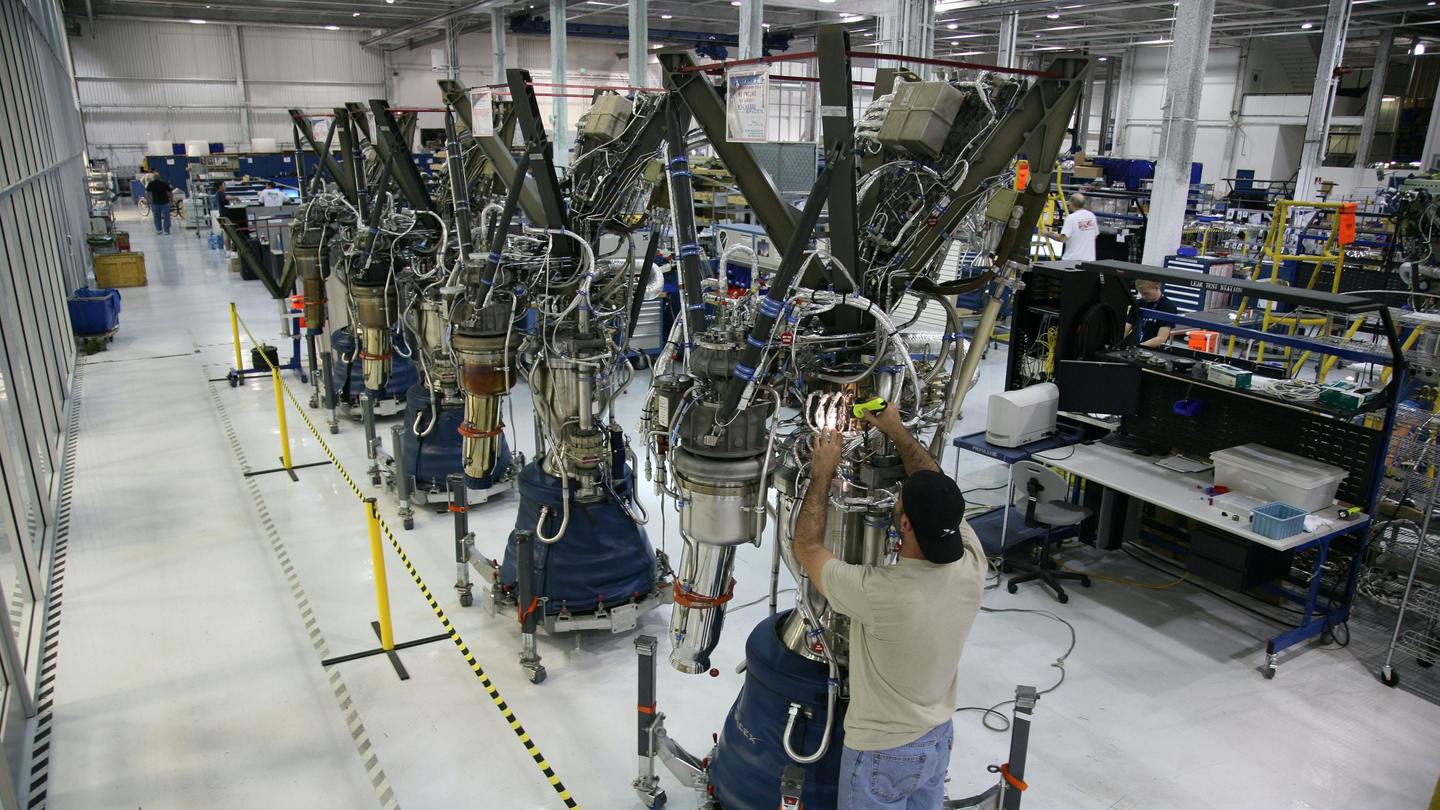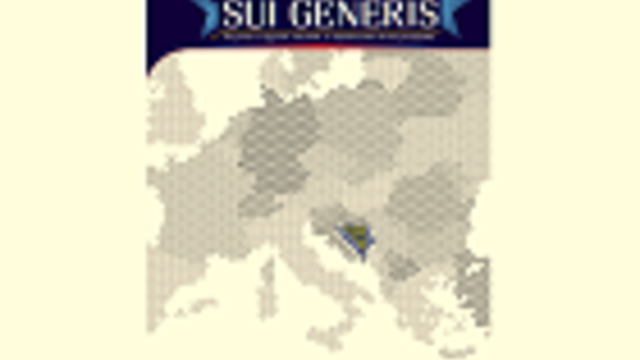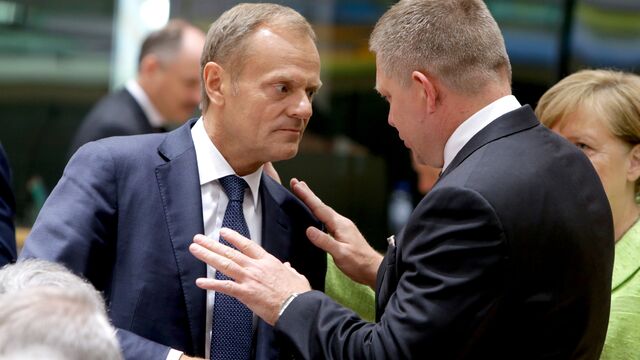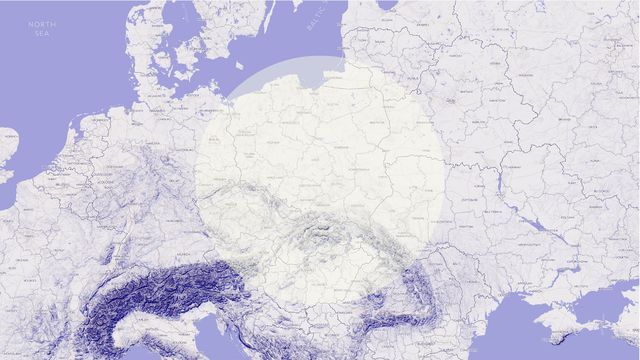Fostering the Catching-Up Process of Central Europe: The Need for an Innovation-Oriented Cohesion Policy

paper
The future of the so far successful growth model of Central European economies, based on low-to-medium technology sectors, is under threat. The Central European countries have not undertaken sufficient reforms in the area of innovation, education and the labour market. The EU should commit to a stronger conditionality regarding the Cohesion Policy funds to provide a stronger incentive to beneficiary countries that need to enforce reforms and put into effect better coordination between regional and sectoral policies of the EU. The reforms in the Member States should encompass business support structures together with educational institutions to ensure that research incubators have a meaningful impact on the competitiveness of their businesses.
Introduction
The enlargement policy was the focus of the debate at the beginning of the crisis in 2008–2009 because of the problems faced by some Baltic States and Hungary. “Central Europe is the sick man of the emerging markets,” argued N. Roubini.1 However, the dim scenarios he painted – drawing parallels with the experience of the 1930s and predicting a rise in unemployment, nationalism and an overall weakening of democracies – have proved mistaken. Since the enlargement, populist parties have emerged in different Central European countries (in Poland, Hungary, and Slovakia, for example) but the situation of the 1930s has not repeated itself.
Eventually, the situation came to be very diverse from one country to another across Central Europe. For some countries, the crisis has only slightly slowed down their catching up process. For others, it has been a serious hurdle. Still, countries that joined the EU from 2004 onwards have been overall much more resilient than those which joined in 1981 and 1986. However, the Central European countries should learn from their experience if they want to escape the fate of countries whose initial economic successes have turned into economic stagnation. In order not to be stuck in amiddle-income trap, they should move up the value chain and invest more significantly in innovation, education and long-life learning. In turn, the EU should make sure that the Cohesion Policy, which has not prevented the Southern European countries from being the countries that were worst hit by the crisis, puts more emphasis on innovation and productivity gains.
A differentiated post-crisis economic geography
The crisis has temporarily stopped the catching-up process of Central Europe. In 2007, out of the new Member States, only Latvia and Estonia experienced a slower growth than the EU15, but when the crisis was at its peak in 2008, all of the new Member States except Poland experienced a lower growth than the EU15. However, by 2009 and 2010 most of them had already recovered and several of them were experiencing a stronger growth than the EU15. In 2012 Poland, the only European economy that weathered the financial crisis without going through a recession, experienced a GDP that was almost 20% higher than its GDP at the beginning of the crisis. In a middle-term perspective, all the Member States that joined the EU in 2004 caught up with the EU15 between 1995 and 2012. In 2013, 3 of them had a GDP which was above 75% of the EU-28 average (the Czech Republic, Slovakia, and Slovenia). In Poland income per capita climbed from slightly above 34% of the EU-15 average in 1990 to around 55% in 2012.
The World Bank has tried to figure out the relative wealth of Poland in comparison with Western Europe for all time periods since the 16th century. Although long-term data on GDP need to be interpreted with caution, Poland seems to currently be achieving its highest level of income relative to Western Europe since ... 1500. For the first time since most of Central Europe became “an agrarian reserve of the increasingly industrialized West”4, the dividing line between the East and the West of Europe is blurring.
Some Member States that joined in 1981 and 1986 did not perform so well, and Nouriel Roubini was obviously wrong to look for the “sick man” of the European economy in Central Europe. It might also be worth comparing Central Europe with its eastern neighbours. In 1990, the GDPs/capita of Poland and Ukraine were similar. Two decades later, however, the ratio between the two countries’ GDPs/capita was 1 to 4, with Poland having the higher figure. Clearly, the European choice has paid off, and a reshaped European economic geography has emerged over the last 20 years.
While elites and public opinions have proved instrumental in the catching-up process, the membership dynamic helped Central Europe to import a legislative framework that is familiar to most foreign investors. The EU integration has al- so dramatically fostered trade as well as foreign investments. Concerning FDIs, Central Europe was quite unattractive in the 90’s but between 1998 and 2004, the Central Eu- ropean countries’ stock of FDIs tripled. Though the curve of FDIs in the manufacturing sector could become flatter in the years to come, FDIs in the service sector are increas- ing, and some Asian countries, such as South Korea or Japan, have stepped up their pres- ence in Central Europe since the 1990’s. China, which made a late entry into Central Europe, is now gradually becoming an important partner for Central European countries.
Is the best yet to come?
Obviously, any assessment of the enlargement should overall be a positive one. However, if the worst is behind us, so too might the best. If anything, the crisis has reactivated some questions. What is the relevance of the CE growth model nowedays? This economic model is reliant on a young population, a qualified workforce, tax attractiveness, low labour costs, flexible social legislation, monetary sovereignty (in some cases), and geographic proximity. The problem, however, is that some of these advantages are bound to disappear in the coming years. Central European countries can hardly rely on more exposure to international trade since their integration into the global economy has already reached a high level. Since the introduction of the market economy in Poland, the value of Polish exports and imports more than doubled as a percentage of GDP. Other Central European economies are also already very open even if efforts to tap into new export opportunities in non-European countries should pay off in the future. Central Europe has become a successful low-cost manufacturing and outsourcing destination. Furthermore, some areas of Slovakia, Hungary, the Czech Republic and the south of Poland have become major automotive hubs. But domestic innovation and homegrown businesses remain limited in Central Europe. Most of the top exporters are foreign-owned, which means that much of the profits are sent back to the owners’ countries as dividends.
Though so far they were a success factor, demographic factors could become a drag on the Central European economies, with some countries – including Romania, Bulgaria and Poland – facing a 20% population decline by 2060. The population of the region, which today is amongst the youngest in Europe, will be amongst the oldest tomorrow. Between 1998 and 2013 Estonia lost 7% of its population. Between 2001 and 2012, Lithuania lost 10% of its population because of emigration and a low birth rate. 10% of the Slovak population, 5% of the Hungarian one and 2 millions Poles are currently working in a different European country than their own. Also, the Central European countries are among the EU Member States with the least favourable long-run projections for their ratios of the elderly to the working-age population. Working-age populations are forecast to fall by 10 to 15%. Though immigration could upend the current demographic projections, the current demographic trends highlight the need for structural reforms to foster growth and preserve sustainable social systems.
The Central European countries have clearly benefited from productivity gains. However, as economic transformation progresses, productivity gains are harder to achieve and now the challenge for the CE countries is to avoid the so-called medium-income trap. Indeed, countries that mainly rely on cost-efficiency gains may at some point experience a slowdown in average GDP growth after having reached a certain level of income. A high quality of physical and human capital, innovation and factor mobility are thus required for the country to move up the value chain. However, several Central European countries have experienced little progress towards obtaining a higher share of medium- and high-technology sectors. In Poland, the growth of exports can be mainly attributed to cost competitiveness as a result of declining labour costs.
As a result, most Central European countries are lagging behind in terms of non-price competitiveness. In 2014, they ranked fairly low on the Innovation Union Scoreboard. Also, none of them are among the “Innovation Leaders” on the Scoreboard. Furthermore, out of all the Central European countries, only Estonia and Slovenia are considered “Innovation Followers” with an innovation performance above or close to that of the EU average. Meanwhile, the Czech Republic, Hungary, Lithuania, Poland, and Slovakia are placed in the category of “Moderate Innovators”, while Bulgaria, Latvia and Romania are considered to be “Modest Innovators” with an innovation perform- ance well below that of the EU average. Poland has been the fastest-growing economy in the EU over the past 10 years, but funds committed to R&D in this country amount to less than 0.9% of its GDP, which is one of the lowest values for this variable in the EU. More worryingly, the pace of progress in this area sets up for a widening of the gap between the Eurozone (whose member states allocated 2.14% of their GDPs to R&D in 2012) and some Central European countries, such as the Czech Republic (where 1.88% of the GDP is dedicated to R&D), Romania (0.42%) or Poland.
A closer look at Portugal, Ireland, Greece, Italy and Spain helps us to understand to what extent the EU accession is, in itself, no recipe for growth. Nowhere else in the EU than in these countries did competitiveness deteriorate so significantly over the last 15 years. The rise of salaries in these countries did not go hand in hand with a rise of productivity, which resulted in an explosive rise in unit labour costs. These countries are also the ones which registered the fewest patents per capita within the EU-15. In the context of the monetary union, low productivity and lack of innovation have dreadful consequences. And last but not least, these countries have been the main beneficiaries of the European Cohesion Policy before the enlargement, which highlights the limits of this policy.
Until 2020, the EU11 countries will receive just over half of the overall Cohesion Policy resources, and around 40% of the money dedicated to Central Europe will be allocated to Poland. In the framework of the cohesion policy and the CAP, the country will get around 106bn € between 2014 and 2020. As an outcome of this support, the total length of highway and express roads has increased fivefold in Poland between 2000 and 2013. The experience of Southern Europe shows, however, that it is crucial for beneficiaries of this policy to go beyond building roads and bridges and supporting the implementation of the EU environmental acquis. Progress in multi-level governance, improvement of the business climate, and increased efforts in innovation are also required, while a trade-off needs to be found between tackling regional disparities and connecting growth poles to the world economy.
In Central Europe, some capital cities are performing very well, but some small cities and some rural areas find it difficult to catch up. Thus, it is important to both support the growth poles that are instrumental to the modernization process (for example, through regional innovation strategies20) and at the same time address restructuring issues in industrial cities as well as regional disparities. Although such disparities are no wonder in the context of the catching-up process, the issue needs to be addressed since in some Central European countries such as Poland or Hungary, populist parties are the most successful in the most depressed areas.
Conclusion and Recommendations
The previous enlargements from 1981 and 1986 provide a learning experience for Central Europe. Greece, Spain, and Portugal remind us that there is no automatic convergence in the long run. The catching-up process is a long-term process, not a sprint. The growth model underpinning the success of Central European economies is no recipe for success in the future since it is based on low-to-medium technology sectors.22 Furthermore, the Cohesion Policy is a formidable tool when it comes to completing infrastructure networks and supporting the implementation of the environmental acquis, but it does not hold the answer to all the problems, and a lack of innovation remains an issue in several beneficiary countries.
- Central European countries should draw the lessons of the crisis that has hit Southern European countries since 2008. Lulled by the apparent mechanical benefits of EU membership, they have not undertaken enough reforms in the areas of innovation, education, and the labour market, and they are still lagging behind the EU average despite the investments made under the umbrella of the Cohesion Policy.
- The EU should commit to a stronger conditionality regarding the Cohesion Policy funds to provide a stronger incentive to beneficiary countries that need to enforce education and innovation policies. Member States might be reluctant to accept this, arguing that they are entitled to decide about the allocation of EU funds by themselves, and that the loose framework that was agreed through the Partnership Agreements is the most appropriate one. However, the EU’s “Six-packˮ and its country-specific recommendations reflect a growing awareness that the Monetary Union requires a better coordination between Member States’ policies.
- The European Commission should ensure that a better coordination between regional policy and sectoral policies of the EU is provided. At the EU level, financing is available, but consistency might be enhanced. More than 16% of the EU budget for 2007– 2013 has been related to innovation. EU programs using the rhetoric of innovation are numerous (Horizon 2020, the Competitiveness and Innovation Framework Pro- gramme, the ERDF), not to mention some EU initiatives that also use it (Regions of Knowledge, Europe INNOVA). Building upon this achievement, more consistency could be provided between the different EU instruments aiming at promoting scientific research and innovation.
- The Commission and Member States should set out their education and innovation priorities more precisely. In several Member States, the Lisbon Strategy rhetoric has led to an increasing number of incubators with little impact on the competitiveness of businesses (Greece provides meaningful lessons in this respect). On the other side, countries such as Denmark or Ireland provide useful examples of successful comprehensive reforms in the areas of education, training and innovation. Indeed, the reforms should encompass business support structures as well as education institutions.
- The European Commission as well as Central European countries should pay more attention to SMEs. SMEs create more jobs than large groups. In addition, they are less prone to offshoring, at least in the early stages of their development. However, only 25% of European SMEs export both within the EU and outside the EU. Their development is less often thwarted by a lack of technological innovation than by a difficult access to capital, inadequate management methods and an insufficient international culture. Paradoxically, they need more support than large companies, but they are not always keen to use the Cohesion Policy opportunities, as many are discouraged by the related cumbersome procedures.
Gilles Lepesant is Senior Researcher at CNRS (the National Centre for Scientific Research). He is affiliated with Géographie-Cités (Paris) and CERI (Sciences-Po/CNRS).
Contact: Gilles.Lepesant@free.fr

![NPS_32_1__cover_print[90] (kopie).jpg](https://img.iir.cz/userimages/news_main/2507/4490_e6a1afb875a8b7aa0d86b55531e1b170_small.jpg)






